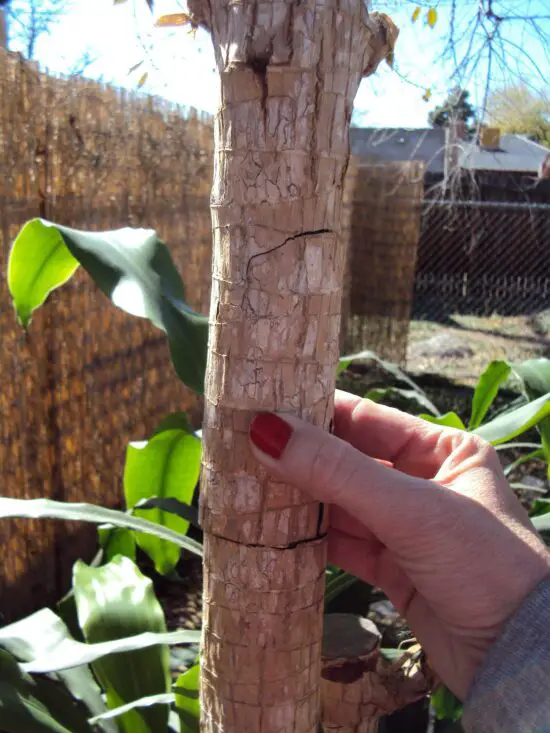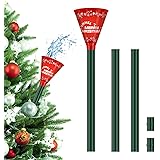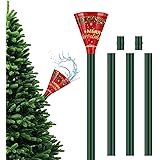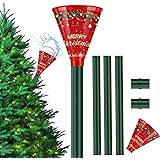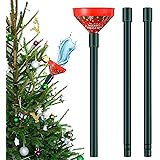When you come across a corn plant stalk with no leaves, it can be a puzzling sight. But fear not, there is a solution! In this article, we will delve into the reasons behind this phenomenon and explore what you can do to ensure the health and vitality of your corn plants.
So, if you’re curious about the mysteries of the corn plant stalk with no leaves, stay tuned for some valuable insights and practical advice that will help you navigate this situation with confidence. Let’s dive right in!
The Corn Plant Stalk with No Leaves: Understanding and Exploring the Phenomenon
A corn plant with no leaves can be a puzzling sight for any gardener or observer. The vibrant green foliage is an iconic characteristic of the corn plant, so encountering a stalk devoid of leaves raises numerous questions. What causes this phenomenon? Is it a sign of poor health or something more normal than we might think?
In this comprehensive guide, we will delve into the world of corn plants without leaves, examining the potential causes, implications, and methods to address this condition. So, let’s uncover the mystery behind the corn plant stalk with no leaves!
Understanding the Anatomy and Growth of a Corn Plant
Before we explore the reasons behind a corn plant lacking leaves, let’s familiarize ourselves with the anatomy and growth patterns of this plant species.
- A corn plant (Zea mays) belongs to the grass family and is cultivated worldwide for its edible kernels.
- It features a tall, sturdy stalk with leaves that emerge in a spiral formation.
- Each leaf consists of a blade and a sheath, with the latter wrapping around the stalk.
- The stalk provides structural support for the plant and helps transport water, nutrients, and sugars.
- Corn plants are classified as monocots, meaning their leaves have parallel veins instead of a net-like pattern.
Understanding the normal growth and development of a corn plant is crucial when trying to comprehend why a plant may exhibit the unusual characteristic of lacking leaves.
Read More: About 3 Week Old Tomato Seedlings
Possible Causes of Corn Plant Stalks with No Leaves
Several factors can contribute to a corn plant stalk without leaves. Let’s examine the potential causes and delve deeper into each one.
1. Natural Leaf Senescence
Like any living organism, corn plants exhibit natural life cycles. Leaf senescence is a normal part of a plant’s growth and refers to the aging and death of leaves. As corn plants mature, older leaves near the bottom of the stalk naturally turn yellow, wither, and eventually fall off. This process allows the plant to redirect resources towards new growth and reproductive efforts.
During natural senescence, the corn plant’s energy is efficiently allocated to developing kernels, ensuring a successful reproductive cycle. As a result, it is not uncommon to observe corn plant stalks with no leaves, especially closer to harvest time.
2. Leaf Diseases and Pests
Diseases and pests can also lead to the loss of leaves in corn plants. Fungal infections, such as anthracnose or northern corn leaf blight, can attack and damage the leaves, causing them to wither, turn brown, or fall off prematurely. Similarly, pests like corn earworms or armyworms can devour the leaves, leaving only the stalk behind.
Identifying and treating these ailments promptly is crucial to prevent further damage to the plant and preserve its overall health. Regular inspections and implementing appropriate pest control strategies and disease-resistant corn varieties can help mitigate the risk of leaf loss due to these factors.
3. Environmental Stressors
Corn plants are sensitive to various environmental stressors that can impact leaf health and development. Here are some key factors to consider:
a. Drought
Water scarcity can significantly affect corn plants and their ability to sustain healthy leaf growth. When subjected to prolonged drought conditions, corn plants may experience wilting, leaf yellowing, and even leaf drop as a survival mechanism. Adequate irrigation and drought-resistant corn varieties can help mitigate the impact of drought on leaf retention.
b. Nutrient Deficiencies
Insufficient nutrients, such as nitrogen, phosphorus, or potassium, can impair the overall health of corn plants and lead to stunted growth and leaf loss. Conducting soil tests and ensuring proper fertilization practices are integral to providing the necessary nutrients for robust leaf development.
c. Extreme Temperatures
Extreme temperatures, both hot and cold, can stress corn plants and hinder leaf formation. High temperatures can cause wilting and leaf scorching, while frost or freezing temperatures can damage leaves, leading to their eventual drop. Planting in suitable climates and employing protective measures during temperature extremes can help protect the leaves from adverse effects.
4. Genetic Factors
Certain genetic factors can influence the leaf characteristics of corn plant varieties. Hybrid corn plants, for example, may exhibit differences in leaf morphology compared to traditional open-pollinated varieties. Some hybrids are specifically designed to have fewer leaves and shorter stalks, allowing for easier mechanical harvesting. Genetic variations can contribute to observing corn plant stalks with no leaves as a normal characteristic for specific varieties.
Read More: About Difference Between a Rotavator and a Tiller
Addressing Corn Plant Stalks with No Leaves
When faced with corn plant stalks devoid of leaves, it is essential to evaluate the underlying cause and take appropriate actions to promote plant health. Here are some strategies to address the issue:
1. Regular Monitoring and Maintenance
Being vigilant and regularly inspecting your corn plants can help identify any early signs of leaf diseases, pests, or environmental stressors. Prompt intervention, such as applying appropriate treatments or adjusting environmental conditions, can prevent further leaf loss and support plant recovery.
2. Disease and Pest Management
Implementing integrated pest management strategies and disease control measures are vital for preventing and managing leaf diseases and infestations. This includes practices such as crop rotation, proper sanitation, biological control methods, and judicious use of pesticides when necessary. Ensuring a healthy and disease-free environment promotes optimal leaf growth.
3. Optimal Growing Conditions
Providing the ideal growing conditions for corn plants is paramount to their overall health and leaf development. This includes regular watering, proper fertilization based on soil test results, and ensuring adequate sunlight exposure. Maintaining a healthy and well-nourished plant can minimize the chances of leaf loss due to stress factors.
4. Choosing Resilient Varieties
Selecting corn plant varieties that are known for their disease resistance, tolerance to environmental stressors, and robust leaf development can positively impact leaf retention. Consult with local agricultural experts or reference reliable seed catalogs to identify suitable corn varieties for your region.
5. Harvest Timing
Understanding the natural senescence process of corn plants is crucial when determining the ideal timing for harvest. Allowing the corn plant to reach maturity and undergo natural leaf senescence ensures maximum nutrient allocation to the kernels. Harvesting too early may result in a stalk with no leaves, as the plant has redirected energy towards reproduction.
Encountering a corn plant stalk with no leaves can be a perplexing sight, but it is essential to approach the situation with a thorough understanding of the plant’s growth patterns, natural senescence, and potential stressors. While it may indicate underlying issues such as disease, pests, or environmental stress, it can also be a normal part of the corn plant’s life cycle. By implementing proper monitoring, maintenance, and addressing any factors contributing to leaf loss, you can ensure healthy corn plants with vibrant foliage and successful harvests.
Frequently Asked Questions (FAQs)
There could be several reasons why your corn plant stalk has no leaves:
The plant might be going through a dormant period.
It could be a natural part of the plant’s growth cycle.
The plant may not be receiving enough light.
The stalk might have been damaged, causing the leaves to fall off.
To check if your corn plant stalk is still alive, gently scrape off a small section of the outer bark. If it reveals a green layer underneath, it means the plant is alive. If it is brown and dry, it is likely dead.
If your corn plant stalk has no leaves, you can try the following:
Ensure the plant is receiving adequate sunlight.
Water the plant properly, avoiding both under-watering and over-watering.
Check for any signs of pests or diseases and take appropriate action.
Trim off any dead or damaged parts of the stalk.
Yes, a corn plant without leaves can still grow new ones under the right conditions. By providing proper care and addressing any underlying issues, such as lighting and watering, the plant can regrow its leaves.
The time it takes for a corn plant to regrow leaves can vary depending on several factors, including the plant’s overall health, growing conditions, and care. It can take anywhere from a few weeks to a couple of months for new leaves to emerge.
It is not necessary to fertilize a corn plant stalk with no leaves. Focus on providing adequate lighting, proper watering, and addressing any underlying issues such as pests or diseases. Once new leaves start to grow, you can consider fertilizing following the recommended guidelines for corn plants.
Yes, you can propagate a corn plant from a stalk with no leaves. Take a healthy cutting from the stalk, ensuring it has at least one node, and follow proper propagation techniques, such as allowing the cutting to root in water or a well-draining soil mixture.
Some common problems that can cause a corn plant to lose its leaves include:
Improper watering, either over-watering or under-watering.
Lack of proper lighting, such as insufficient sunlight.
Pest infestation, including mealybugs, spider mites, or scale insects.
Diseases, such as root rot or leaf spot.
Final Thoughts
In conclusion, the sight of a corn plant stalk with no leaves can be disheartening. However, it is important to remember that this is a natural occurrence and part of the plant’s life cycle. The absence of leaves does not necessarily mean that the plant is unhealthy or doomed.
Instead, it may indicate a period of dormancy or preparation for future growth. By providing the necessary care and monitoring the plant’s condition, it is possible to nurture the corn plant back to vitality and witness the regrowth of its leaves.
Auto Amazon Links: No products found.
Perfect Plants Christmas Tree Saver 8oz. | Easy Use Xmas Tree Preserver Food | Have Healthy Green Christmas Trees All Holiday Season
$9.97 (as of December 3, 2025 00:36 GMT +00:00 - More info- Product prices and availability are accurate as of the date/time indicated and are subject to change. Any price and availability information displayed on [relevant Amazon Site(s), as applicable] at the time of purchase will apply to the purchase of this product.
Kaiedos Christmas Tree Watering Funnel - 39 Inch Funnel, Reusable Design, Makes Watering Your Live Tree a Snap!
$14.99 (as of December 3, 2025 00:36 GMT +00:00 - More info- Product prices and availability are accurate as of the date/time indicated and are subject to change. Any price and availability information displayed on [relevant Amazon Site(s), as applicable] at the time of purchase will apply to the purchase of this product.
Christmas Tree Watering Funnel, Real Christmas Tree Water Long Funnel About 40 Inch, Trees Watering System for Water Indoor Outdoor
$15.99 (as of December 3, 2025 00:36 GMT +00:00 - More info- Product prices and availability are accurate as of the date/time indicated and are subject to change. Any price and availability information displayed on [relevant Amazon Site(s), as applicable] at the time of purchase will apply to the purchase of this product.
IPOOLTENG Christmas Tree Watering Funnel 3 Tube 1 Funnels 40 Inch - 3 Section Plastic Christmas Tree Funnel Waterer, Long Funnels for Watering Trees, Best Gifts for Your Parents to Water Tree
$15.53 (as of December 3, 2025 00:36 GMT +00:00 - More info- Product prices and availability are accurate as of the date/time indicated and are subject to change. Any price and availability information displayed on [relevant Amazon Site(s), as applicable] at the time of purchase will apply to the purchase of this product.
1 Pack Christmas Tree Watering Funnel System, 44 Inch Christmas Tree Watering Stick with Adjustable 3-Section Design, Reusable & Spill-Free, Xmas Plant Waterer Tool for Indoor and Outdoor
$16.99 (as of December 3, 2025 00:36 GMT +00:00 - More info- Product prices and availability are accurate as of the date/time indicated and are subject to change. Any price and availability information displayed on [relevant Amazon Site(s), as applicable] at the time of purchase will apply to the purchase of this product.
Cuisinart 6.5" Cast Iron Smashed Burger Press, Round Flat Edge Grill Press for Crispy Smash Burgers, Burger Tool for Grill and Griddle Accessories, for BBQs and Tailgates
$24.99 (as of December 3, 2025 16:48 GMT +00:00 - More info- Product prices and availability are accurate as of the date/time indicated and are subject to change. Any price and availability information displayed on [relevant Amazon Site(s), as applicable] at the time of purchase will apply to the purchase of this product.
Muddy Mat® Shown on TV Super Absorbent Microfiber Dog Door Mat for Muddy Paws, Non-Slip Washable Pet Rug, Quick Dry Chenille Entryway Carpet, Machine Washable Indoor Outdoor mat, Grey 30"x19"
$19.95 (as of December 3, 2025 16:48 GMT +00:00 - More info- Product prices and availability are accurate as of the date/time indicated and are subject to change. Any price and availability information displayed on [relevant Amazon Site(s), as applicable] at the time of purchase will apply to the purchase of this product.
Snow Joe Premium Enviro Blend Ice Melt, Green-Coated Deicer Crystals, 50 lb - Safer Melter for Vegetation, Concrete & Metals w/ Anti-Corrosion Calcium Magnesium Acetate
$32.97 (as of December 3, 2025 16:48 GMT +00:00 - More info- Product prices and availability are accurate as of the date/time indicated and are subject to change. Any price and availability information displayed on [relevant Amazon Site(s), as applicable] at the time of purchase will apply to the purchase of this product.
OLANLY Dog Door Mat for Muddy Paws 30x20, Absorbs Moisture and Dirt, Absorbent Non-Slip Washable Doormat, Quick Dry Chenille Mud Mat for Dogs, Entry Indoor Entryway Carpet for Inside Floor, Grey
$9.99 (as of December 3, 2025 16:48 GMT +00:00 - More info- Product prices and availability are accurate as of the date/time indicated and are subject to change. Any price and availability information displayed on [relevant Amazon Site(s), as applicable] at the time of purchase will apply to the purchase of this product.
Zevo Flying Insect Trap Official Refill Cartridges - Fits Both Zevo Trap & MAX Indoor Fly Trap - Authentic Trap+Lock Technology to Catch Gnats, House & Fruit Flys (4 Official Refill Cartridges)
$14.97 (as of December 3, 2025 16:48 GMT +00:00 - More info- Product prices and availability are accurate as of the date/time indicated and are subject to change. Any price and availability information displayed on [relevant Amazon Site(s), as applicable] at the time of purchase will apply to the purchase of this product.

